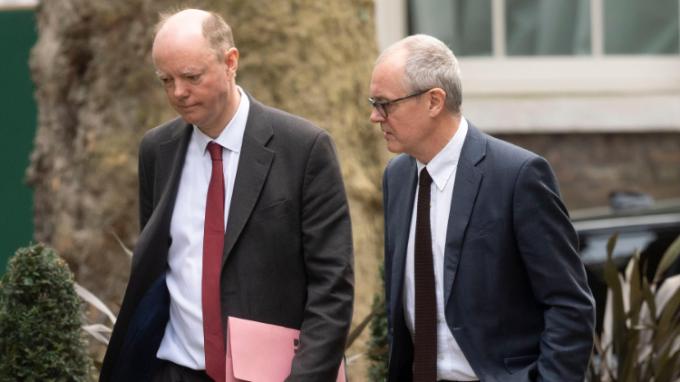Can The Government Learn From Last Year's Covid Communications Confusion?
Prime minister Boris Johnson arrives at a Downing Street press conference, 30 December 2020 | Heathcliff O'Malley/Daily Telegraph/Alamy
7 min read
Much of the public messaging during the pandemic has been criticised for its lack of clarity. With new rules coming in over the coming months, Adam Payne deciphers the government’s response to the communications challenge.
If or when there is an inquiry into the government’s coronavirus response, its public messaging will likely be under the microscope.
It has been criticised throughout the pandemic for being confusing and inconsistent in its messaging, most recently earlier this month when two cabinet ministers and Boris Johnson’s spokesperson offered three contrasting views on whether Brits should book summer holidays.
In May, a Johnson address to the nation left people scratching their heads over whether to return to work the next morning. Even the examples which appear less serious – such as the November confusion when ministers scrambled to clarify whether a scotch egg constituted a substantial meal – demonstrate the challenge the government has faced in communicating unprecedented policies to the public.
This all comes at a time when the stakes, as the UK has tragically learnt, couldn’t be higher.
“Communication is absolutely critical,” said Tim Gardner, senior policy fellow at The Health Foundation, specialising in public perception.
Polling shows at first glance what looks like a pretty simple story of government messaging over the last 12 months: it made a strong start and got weaker as the policy response became more nuanced.
Opinium found that the public believed government messaging was clearest at the beginning of the pandemic in March, when they were told to simply “Stay at home. Protect the NHS. Save lives.” An overwhelming majority of 88% said it was clear, while 12% said it wasn’t.
“It’s unbelievably difficult to communicate, and even critics of the government ought to have some regard for that”
However, people were less sure about the stages that followed: the easing of the first lockdown, the rule of six, and the regional tiered system. Only 50% said the tiers introduced late last year were clear, compared to 44% who said they weren’t. Ipsos MORI polling for The Health Foundation also found that the public felt the rules became harder to understand as the government started easing lockdown restrictions in May.
An ex-Downing Street press officer defended the government’s pandemic messaging, arguing that this trend was to be expected as it reflected the reality that rules inevitably become harder to explain as they become less simple – particularly when they’re not the same for all settings and regions.
“It’s unbelievably difficult to communicate, and even critics of the government ought to have some regard for that,” they said.
University College London (UCL) research published in July suggests it might not be that straightforward, however.
The university’s Covid-19 Social Study found that while public understanding of the rules dropped across the UK heading into the summer, the decrease was significantly larger in England than in the devolved nations. Less than half of respondents in England (45%) said they had a “broad understanding” of the rules at that point, compared to 75% in Scotland and 61% in Wales.
Linda Bauld, professor of public health at the University of Edinburgh, said the government made communicating more nuanced instructions to the public even harder for itself with “very unhelpful” decisions to pause the daily Downing Street briefings and switch to a “non-evidence based message which its behavioural science group didn’t endorse” – the slogan, “stay alert”. This slogan was vague and exposed a lack of long-term communications strategy, she argued.
A figure who was close to Downing Street’s coronavirus response at the time admitted that the public messaging wasn’t consistent enough in the months following the first lockdown.
 Bauld, who sits on Independent SAGE’s Behavioural Advisory Group, added that the Dominic Cummings affair was a disaster for government communications. UCL research for The Lancet released in August found that Cummings’ controversial 264-mile drive to Durham at the height of the first lockdown led to a significant and lasting drop in public confidence in government.
Bauld, who sits on Independent SAGE’s Behavioural Advisory Group, added that the Dominic Cummings affair was a disaster for government communications. UCL research for The Lancet released in August found that Cummings’ controversial 264-mile drive to Durham at the height of the first lockdown led to a significant and lasting drop in public confidence in government.
The House spoke to several former ministers and officials who identified two key issues that undermined the government’s pandemic messaging throughout 2020: leaking and overpromising.
The press reporting private discussions within government and revealing decisions hours or even days before ministers announce them have been regular occurrences. According to former minister for the Cabinet Office David Lidington, it has often “made it very difficult for the public to understand what’s going on”.
Another ex-Downing Street press officer said that leaks not only made government look incompetent, but created confusion that risked putting people at greater risk of catching the virus.
“If, back in the David Cameron years, someone leaked some new development on defence spending coming down the road and a journalist had a two-day jump on that, frankly, who cares? It doesn’t really make a difference to anybody’s life. But in this case, it is hugely serious,” they said.
A figure who has worked closely with Johnson said his habit of overpromising stemmed from a personality trait of wanting to provide people with as much light at the end of the tunnel as possible.
It led him, for example, to declare at a press conference in March that “we can turn the tide within the next 12 weeks, and I am absolutely confident that we can send coronavirus packing in this country,” and to say in July he hoped there would be a “more significant return to normality” by Christmas. In May, he described antibody tests as a “game-changer” in the UK’s battle against the virus.
“Their communications since Christmas have demonstrated that they have raised their game considerably”
“When in government, you know that the public and the media want certainty but one of the challenges of the pandemic is that you can’t be certain about so many things,” Lidington said.
However, the former senior minister stressed that “we have seen a shift” in the New Year. Johnson and Cabinet ministers were noticeably more reticent in the run up to finally revealing details of their roadmap for lifting lockdown.
“Their communications since Christmas have demonstrated that they have raised their game considerably,” Lidington said. Professor Bauld said ministers had adopted “a more humble tone”.
Dan Rosenfield, who Johnson appointed to be his chief of staff in late November, has been credited with helping instil a more cautious approach into the prime minister.
Explaining the different stages of the roadmap will pose a similar challenge to the one faced by the government last spring, said The Health Foundation’s Tim Gardner.
“It’s going to start making changes to what is generally a pretty clear position,” he said.
This will require “very clear messages catered to different parts of the population” and “communicated by spokespeople with high levels of trust with different groups,” Gardner explained.
The Health Foundation has found that confusion over the new rules last summer was particularly high among young and ethic-minority people, which suggests that ministers will need to consider how to speak to specific parts of the population more effectively as it prepares to reopen society.

Lidington said the government’s decision to deploy scientific advisors as de facto public messengers was a communications success and ought to continue. Chris Whitty, Sir Patrick Vallance and Jonathan Van-Tam had become “real assets” for the government, he said.
The rules will become more nuanced in the coming weeks as the government puts its roadmap into action. New variants will emerge along the way, as probably will the need for new vaccines. Some basic social distancing rules will likely remain in place for many more months even if, as ministers expect, the current lockdown ends up being the last.
Government will need to learn the lessons of the last year to avoid another summer of confusion.
A government spokesperson said:
"The government has worked tirelessly to combat the pandemic, delivering a strategy to protect our NHS and save lives.
"Throughout this crisis we have set out clear instructions to the public about what they need to do in order to delay the spread of the disease. The vast majority continue to play their part, washing their hands regularly, wearing face coverings and following social distancing rules.
“We also work closely with local authorities to share best practice and insight on communications, and have delivered a paid marketing campaign according to local risk levels in England to ensure our messaging lands locally.”
